Online courses are increasingly popular. They provide flexibility for students that need to work and study, or live at home. They can provide a supportive and interesting learning environment, on a par with face-to-face learning.
Online courses also provide a safe and socially distanced way of learning that can complement, or in some cases replace, traditional courses.
However, to ensure your students and staff are happy with your online courses, put in place an online user feedback strategy as soon as possible. You can only assess the quality, accuracy and value of your course by asking your students and staff for feedback, preferably on an ongoing basis.
In this article, we’ll look at 3 helpful tool types that will make this online feedback process much easier for you.
1. Feedback buttons (with some recommendations)
Best for: Ongoing feedback about anything from student satisfaction to whether your content is up-to-date
A feedback button tool does three things:
- Provides a feedback button that sits on your website or (often) directly on your course pages
- Provides customisable forms so you can get different types of feedback, from typos to satisfaction ratings
- Sends that feedback to a destination that is easiest for you - your inbox, a feedback dashboard or straight to one of your favourite project management tools
Here is our definitive guide to feedback buttons.
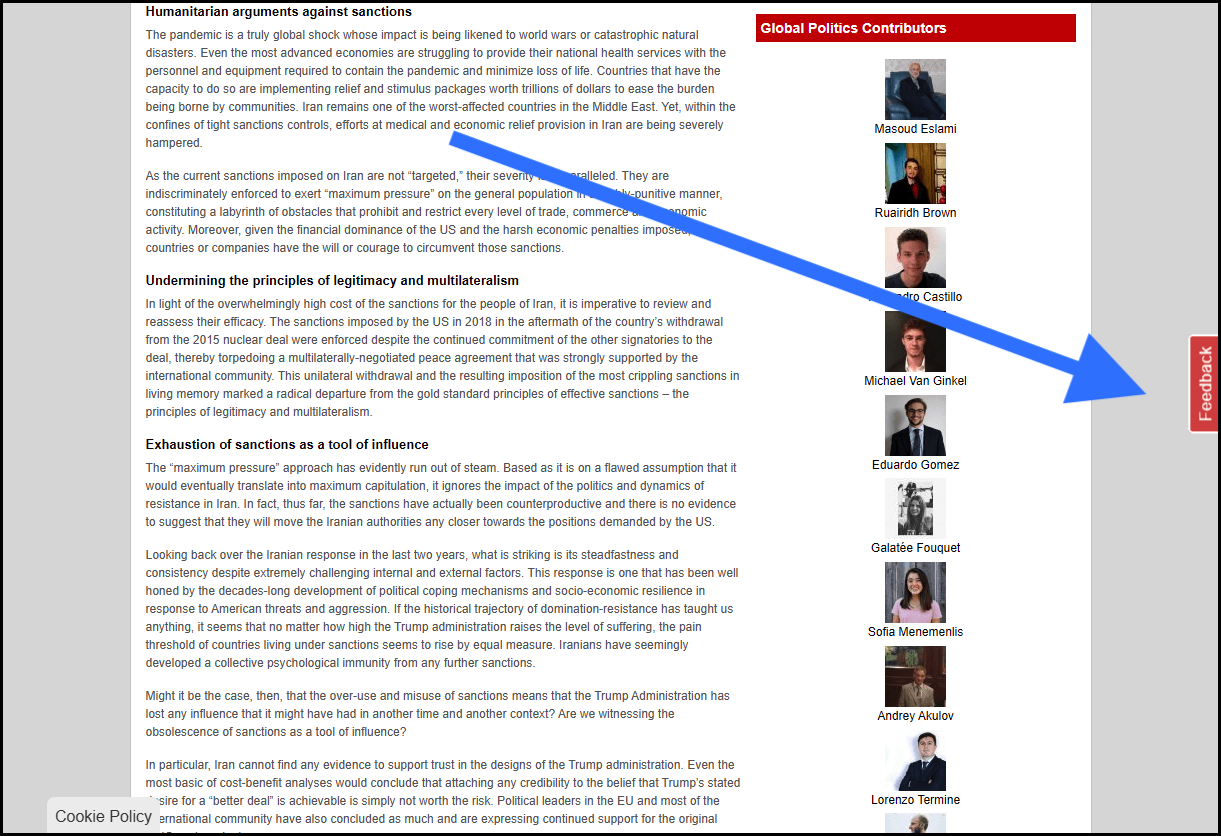 This page has a feedback button to the right
This page has a feedback button to the right
Feedback buttons are useful because students and staff should be able to send you feedback without leaving the page they are on. This means they can get in touch as soon as they spot an issue (or see something they particularly like). If you make students and staff wait to give you feedback many simply won’t get round to it, and might feel slightly cross as a result.
Dr Edward Banham-Hall runs online courses designed to help doctors earn their membership of the Royal College of Physicians. He says:
We have to feel completely confident in the quality of our course and depend on high student satisfaction to remain in business. Without that, we really couldn’t exist. That can be really challenging because medical guidelines change all the time, science moves forwards, and it is really easy for our content to become stale.
Asking for ongoing student feedback on online courses decreases your workload, increases student and staff satisfaction and helps you stay ahead of competitors.
In this example, users are asked to identify the type of mistake they’ve spotted. This way, you’ll have all typos helpfully collected together, for example, making them easier to deal with.
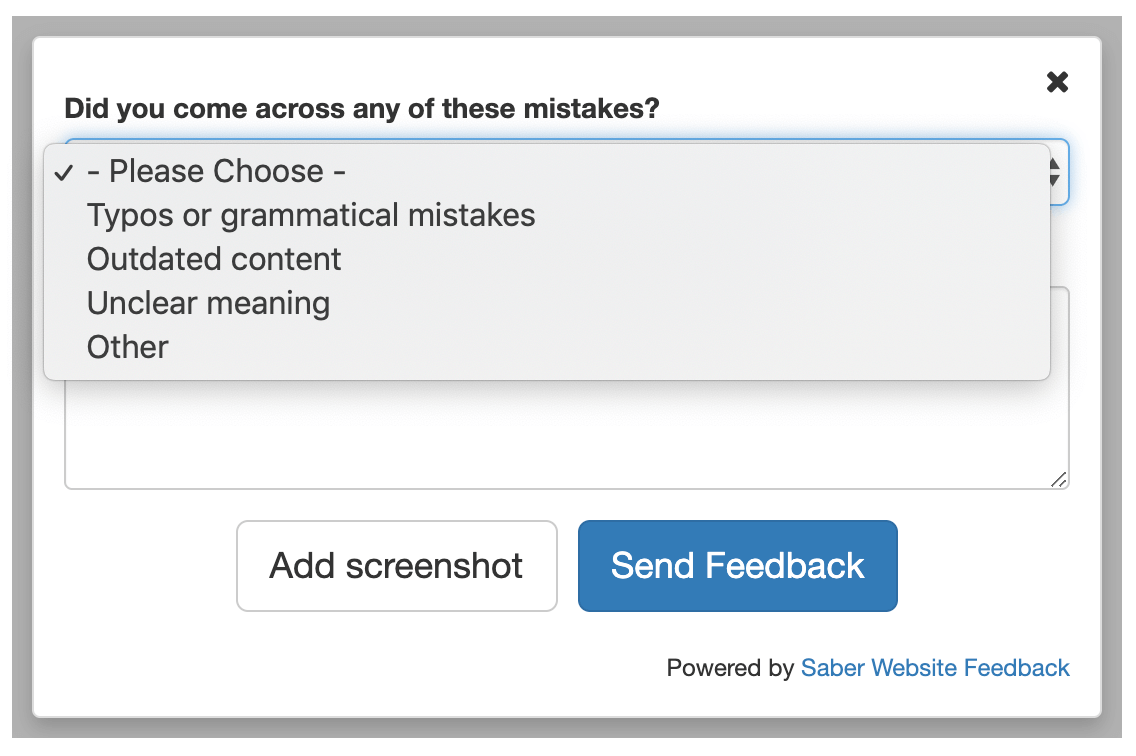
A different approach using a feedback button would be to conduct a quick ‘mid course’ satisfaction poll:
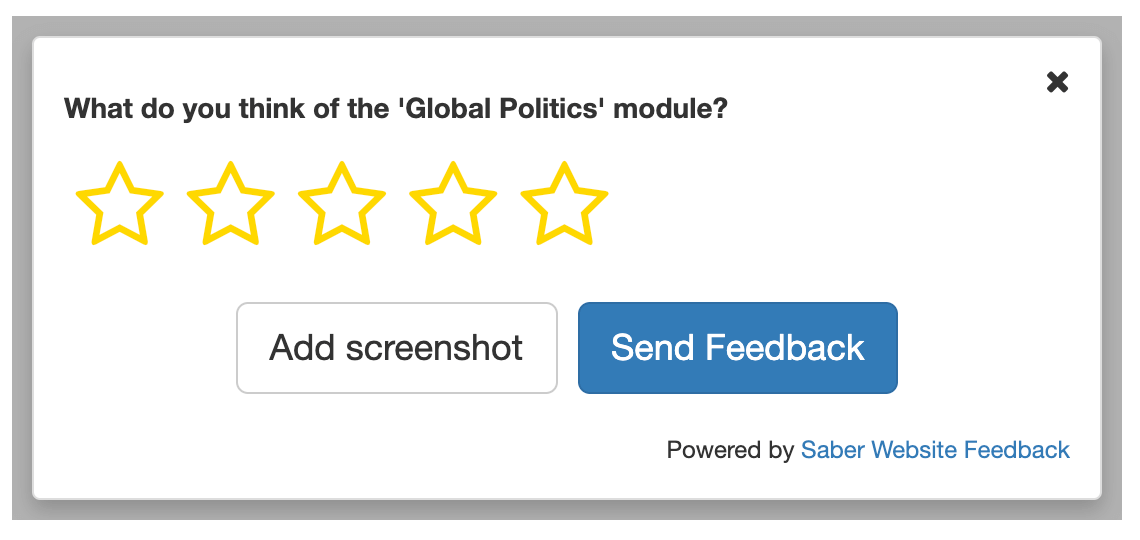
We provide feedback buttons at Saber Feedback that integrate with almost any web or student learning environment including Moodle.
If you’d like to see more options – because all feedback tools are different – we also list the 10 best feedback widgets in this article. Just make sure they integrate with your learning platform.
2. Online survey tools (with some recommendations)
Best for: One-off feedback from all your students
Post-course surveys are already a mainstay of the education sector. However, online survey tools offer much more flexibility. Why wait until after the course has been completed to ask for feedback? If you make improvements to your course now you can boost student (and staff) satisfaction ratings and make sure you offer a more supportive environment.
There are a huge number of online survey tools to choose from that can be roughly divided into three categories: website survey tools that usually ‘pop up’ on a web page due to some kind of trigger; ‘traditional’ survey tools that can be sent via email or integrated with your website or online learning environment; and survey or feedback tools that are specific to your learning environment.
Website survey tools include options like Qualaroo, Survicate and Pulse Insights.
Qualaroo, for example, lets you create simple, short surveys that usually appear at the bottom of your screen. You can target users based on various behaviours, which is a clever way of getting specific feedback from students.
These tools can be expensive, but it’s always worth asking if they have a non-profit discount, if you qualify. Survicate offers a discount for educational institutions and non-profits.
‘Traditional’ survey tools include Typeform, SurveyMonkey and SurveyPlanet. You can easily send these out via email, social media or put them in a chat forum. Or embed them on your site.
Typeform have a free student satisfaction survey template that you can use. Online survey tools tend to get a good response rate, because they can be customised to make them conversational, fun and easy to fill out on any device.
You’ll need to check that the survey tools connect with your online learning environment, if you want to embed survey form triggers within your courses. It will depend on what learning management system or online platform you’re using (Moodle, LearnDash, Udemy, and so on).
 Ask for student feedback using conversational, engaging forms like this Typeform one
Ask for student feedback using conversational, engaging forms like this Typeform one
Some learning environments provide a plugin or compatible feedback or survey tool that you can use. For example, Moodle provides a survey tool and feedback tool.
This type of tool is useful because they (should!) be easy to install and targeted to your needs. However, sometimes tools that focus only one platform can be narrow in scope and a bit behind the times. Feedback tools that are more ‘platform agnostic’ can often be more innovative, user friendly and customisable.
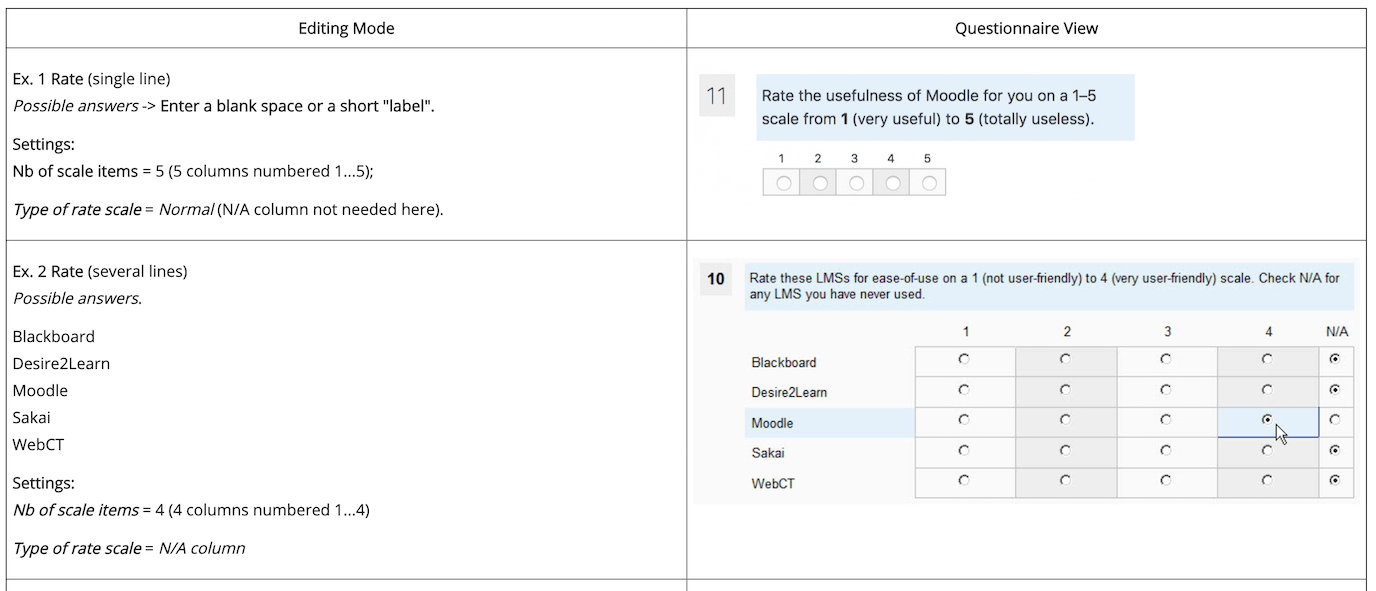 Online learning platforms, like Moodle, may provide their own feedback tools
Online learning platforms, like Moodle, may provide their own feedback tools
3. Community forums (with some recommendations)
Best for: Encouraging students to ‘self-service’ if they have problems and creating a sense of community
Creating custom forums for your students and staff can be a valuable way of getting ongoing feedback on your courses. When forums work really well they can also save you time, because ‘power users’ will answer questions so you don’t have to do this yourself.
Forums can also create a supportive and active environment around your course and institution, that inspires new people to join.
You can create just one forum for all your students and staff, or create separate forums for each course.
Make sure your forums are a safe, useful space for everyone. Forums unfortunately tend to attract spammers, who use them to try and push their unsavoury agendas. They can also, occasionally, bring out the worst in people if they can post anonymously. However, generally your students and staff will want to be helpful and kind.
Most forums should offer plenty of spam prevention options to help you. You will still need to be vigilant though. Another less well known option to community forums is ideas boards, often with in-built voting functionality. These generally have better privacy options and attract less spam. Options include Feature Upvote which offers a non-profit discount.
Community forum builders include GetSatisfaction and Discourse.
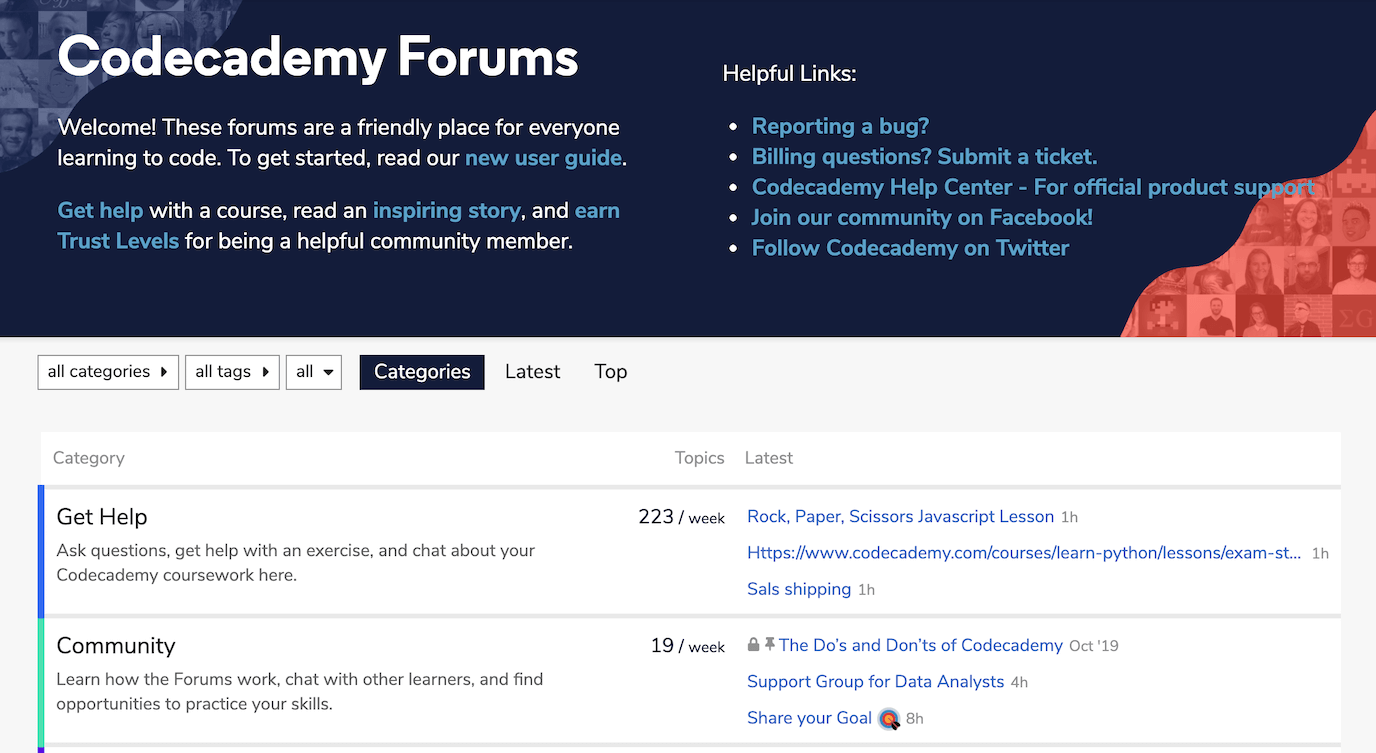 This forum is powered by Discourse
This forum is powered by Discourse
Which online feedback tool is the best for you?
The most helpful feedback tool for you is the one that gives you the most useful results with minimum effort on your part. If you don’t like the one you are using, there are plenty of others that will do a better job.
Embrace the online nature of your courses rather than treating them exactly the same as traditional ‘face to face’ courses. Play to the strengths of an online environment to create an interesting, modern and engaging learning experience.
When choosing a feedback tool you might want to consider:
- What feedback you want – do you want the ability to ask for different feedback at different times?
- When you want feedback – occasionally or ongoing?
- Who you want feedback from – all students or just some of them?
- How much time you have – can you keep an eye on a forum or do you just want a feedback button that provides private feedback?
- Where you want that feedback to go – to your inbox, a special dashboard or to familiar project management tools?
- How user friendly you need your feedback tool to be – if you want a high response rate then it needs to be very user friendly
- Particular challenges for your course – does your content go out of date quickly?
Interested in how you can improve your online course?
Getting student and team feedback is a great place to start. In our article on ‘How you can improve your online course’ we also look at spotting weak areas with a content course audit and repositioning your course to show your USP.
If you’re struggling with pricing, have a look at our article ‘How to price your online course so it sells (tips and tactics)’.
